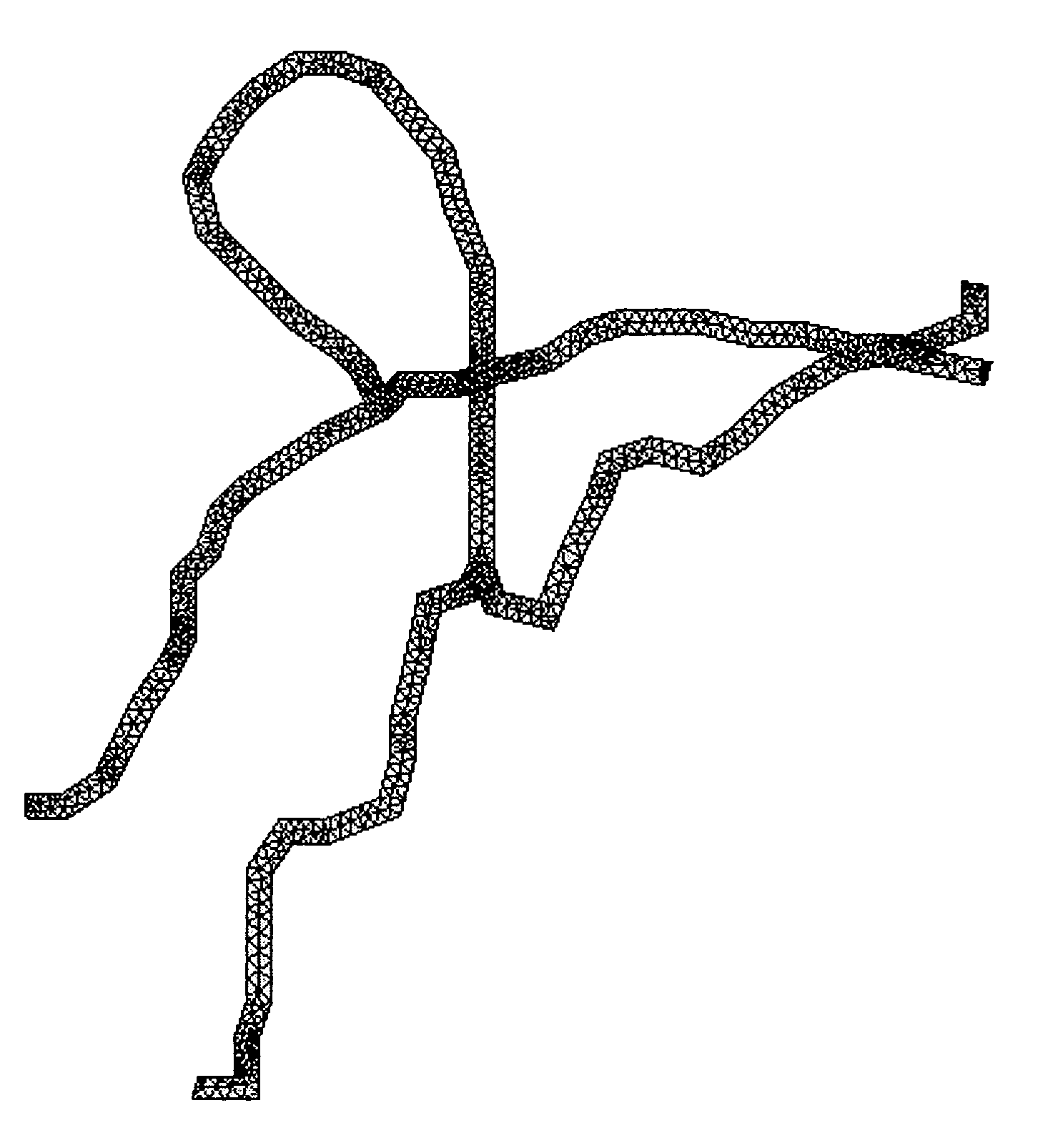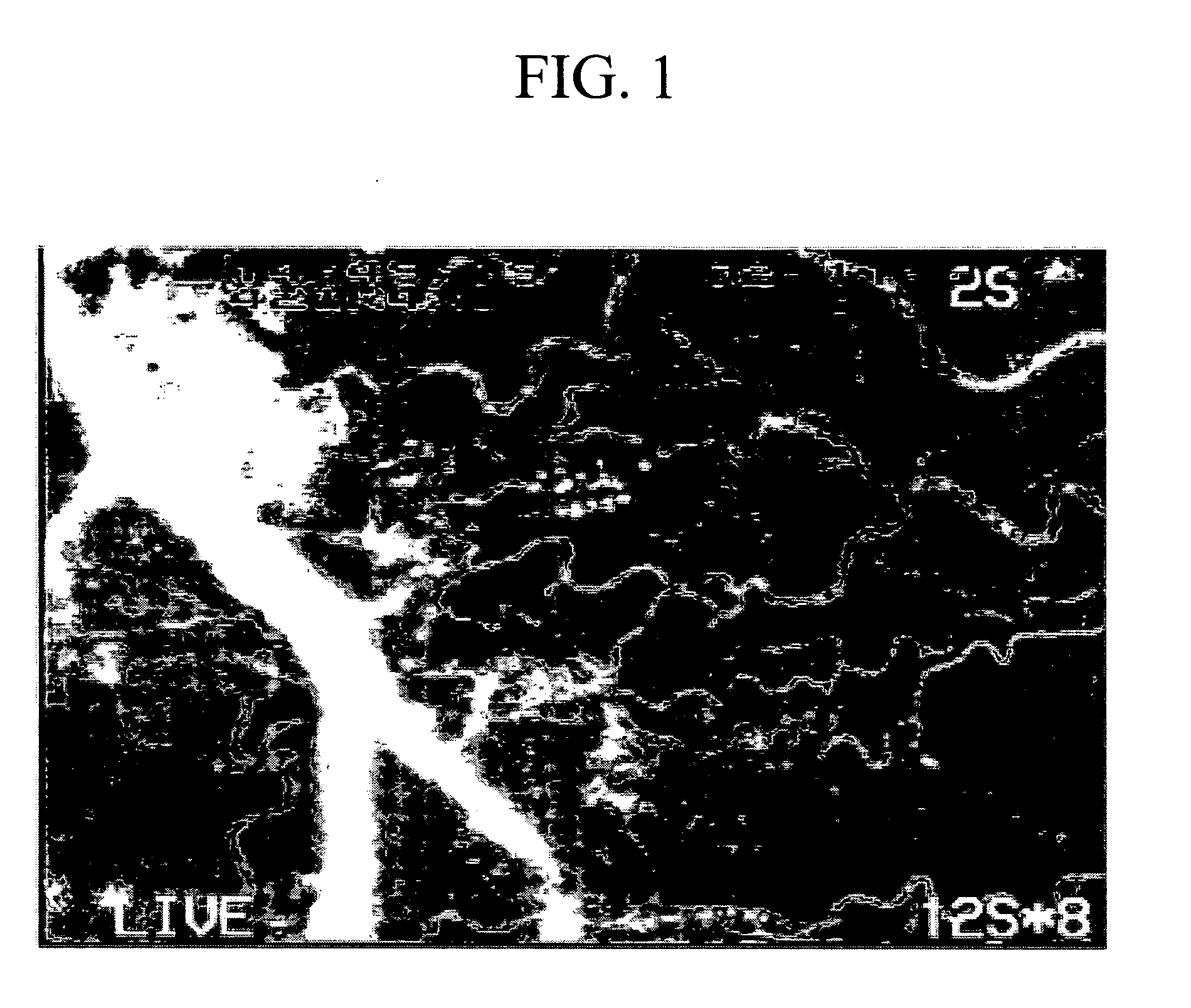Synthetic microfluidic microvasculature network
a microfluidic microvasculature and synthetic technology, applied in the field of synthetic microfluidic microvasculature network, can solve the problems of inability to predict, inability to provide realistic sizes and geometries corresponding, and inability to understand the complex interplay between flow, cells and particles, etc., to eliminate concerns of cross-contamination and optimize drug delivery
- Summary
- Abstract
- Description
- Claims
- Application Information
AI Technical Summary
Benefits of technology
Problems solved by technology
Method used
Image
Examples
examples
CFD Simulation of Particle Transport and Adhesion in a SMN and Experimental Validation
[0083] Particle transport at two junctions in the microvascular network shown in FIG. 12 is presented in FIG. 13 and FIG. 14. The direction of particle transport at the junction is indicated by arrows. Experimentally measured and numerically predicted values of particle flux at the two bifurcations shown in FIG. 13 and FIG. 14 are presented in FIG. 15. Fluid and particle flows are compared for both of the junctions in FIG. 16. The flow and particle ratios were defined with respect to the conditions in the arm labeled “In.” While the particle split is nearly identical to the flow split at Junction 2, the flow / particle split is significantly different at Junction 1. These effects are representative of the complexities of the in-vivo environment and are clearly not realizable in existing parallel flow chambers.
[0084] Particle adhesion in the SMN studies compared very well with simulated results. FIG...
PUM
| Property | Measurement | Unit |
|---|---|---|
| diameters | aaaaa | aaaaa |
| diameters | aaaaa | aaaaa |
| diameters | aaaaa | aaaaa |
Abstract
Description
Claims
Application Information
 Login to View More
Login to View More - R&D
- Intellectual Property
- Life Sciences
- Materials
- Tech Scout
- Unparalleled Data Quality
- Higher Quality Content
- 60% Fewer Hallucinations
Browse by: Latest US Patents, China's latest patents, Technical Efficacy Thesaurus, Application Domain, Technology Topic, Popular Technical Reports.
© 2025 PatSnap. All rights reserved.Legal|Privacy policy|Modern Slavery Act Transparency Statement|Sitemap|About US| Contact US: help@patsnap.com



